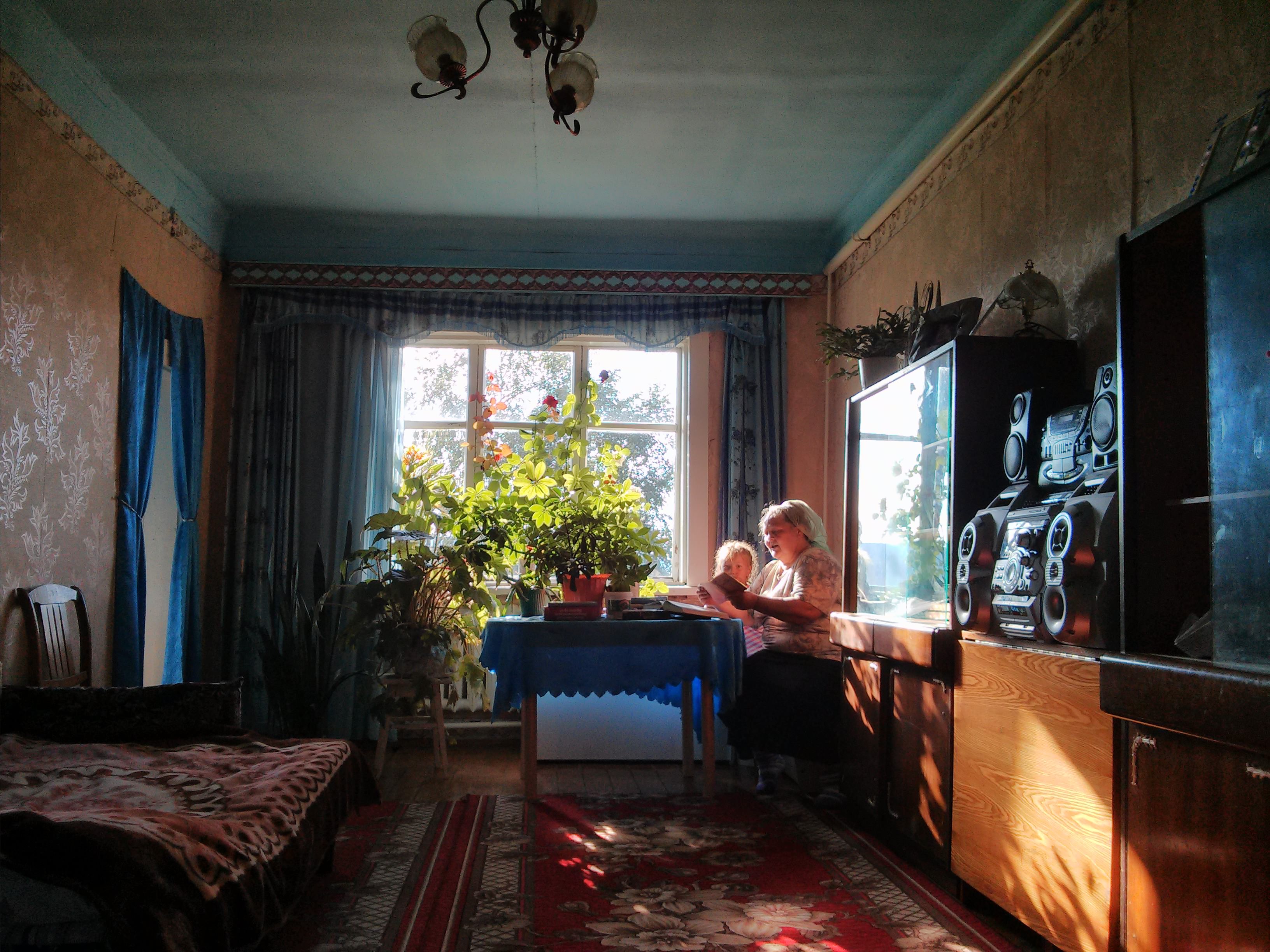How does one compress years of research, several travels, and innumerable stories into one picture that encompasses the narrative of the place and people’s struggle with the everyday living in a precarious space? Do I bring to the attention of the living a portrait of the dead? Do I opt for a picture of childhood? Do I select a spectacular landscape or a scene where people come together laboring on their happiness: a celebration, a procession, daily chores? The scene captured in this photo is a domestic, sweet scene: in soft light, a grandmother holds a book in her hands. It appears that she reads to her granddaughter. I, the observer of the scene, a photographer with a camera, know that the grandmother does not read but sings. She sings the hymns of the Baptist church: several years prior a priest visited the village of Anosovo, Siberia, with a mission. He was going to build a church, but after some time, he departed—went back to Germany.
The village of Anosovo, Siberia, emerged as a result of the rapid processes of urbanization and industrialization that changed the face of the planet. Dispersed throughout the Russian Federation are thousands of small “city-type settlements” constructed in the second half of the twentieth century. The remarkable period of industrial upheaval resulted in mass internal migrations and relocations in response to a centrally planned economy. Camps, town, and cities sprang up almost overnight, creating a remarkable industrial geography of socialist reorganization. Following the official end of the Soviet Union in 1991, many of these towns on the industrial edgelands suffered from a drastic reduction in government support and a collapse of manufactures. These processes resulted in a population evacuation. In Anosovo, the population was around 2,000 in the 1970s, but now it is a little less than 600. The grandmother and her granddaughter no longer live in Anosovo. Last time I visited, in 2017, they were gone.

Commentary on Rachel Tanur's Works: Guatemala Bus Stop